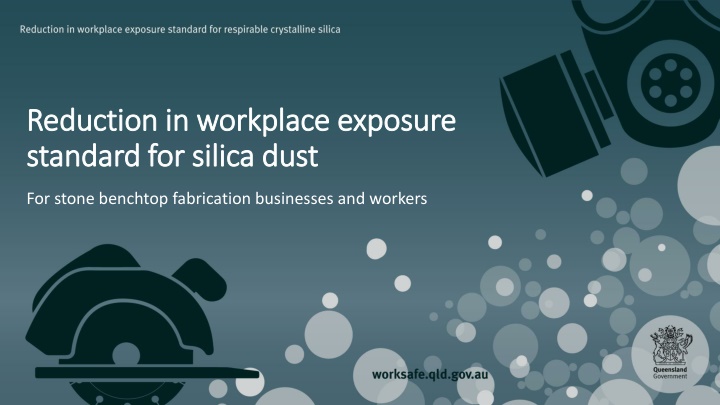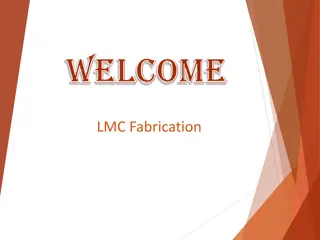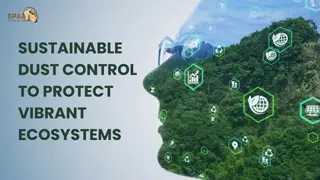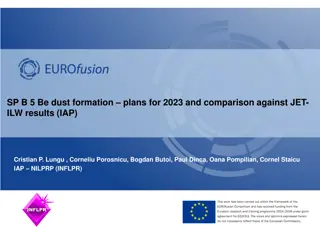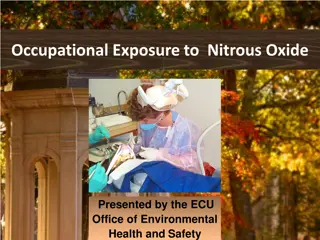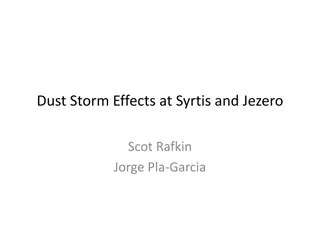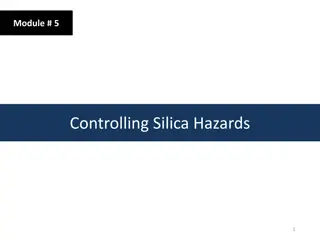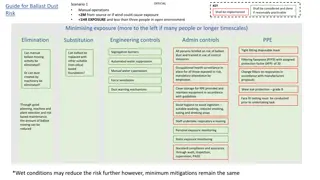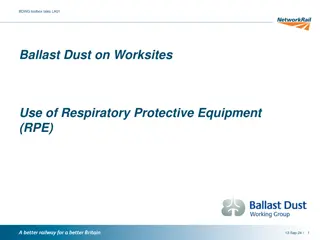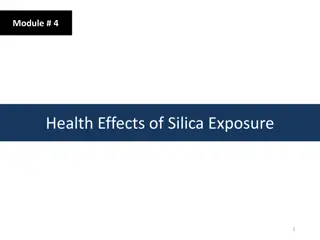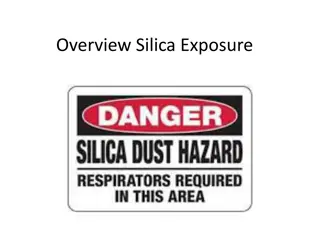Workplace Exposure Standard for Silica Dust in Stone Benchtop Fabrication
Reduction in workplace exposure standard for respirable crystalline silica dust has been implemented, halving the national standard to 0.05 mg/m3. The new standard aims to protect workers in stone benchtop fabrication businesses from serious lung diseases caused by breathing in silica dust. Employers must implement controls such as dust management, air monitoring, health monitoring, and respiratory protection to ensure compliance with the standard. Reviewing and aligning practices with the Code of Practice 2019 is essential to meet or exceed industry standards.
Download Presentation

Please find below an Image/Link to download the presentation.
The content on the website is provided AS IS for your information and personal use only. It may not be sold, licensed, or shared on other websites without obtaining consent from the author.If you encounter any issues during the download, it is possible that the publisher has removed the file from their server.
You are allowed to download the files provided on this website for personal or commercial use, subject to the condition that they are used lawfully. All files are the property of their respective owners.
The content on the website is provided AS IS for your information and personal use only. It may not be sold, licensed, or shared on other websites without obtaining consent from the author.
E N D
Presentation Transcript
Reduction in workplace exposure Reduction in workplace exposure standard for silica dust standard for silica dust For stone benchtop fabrication businesses and workers
Reduction in workplace exposure standard for respirable crystalline silica The national workplace exposure standard for respirable crystalline silica (RCS) has been halved from 0.1 mg/m3to 0.05 mg/m3. The new workplace exposure standard takes effect in Queensland from 1July 2020. The workplace exposure standard will be exceeded if dust breathed in over an eight hour shift contains more silica dust than the amount shown next to the five cent piece.
Respirable crystalline silica Respirable sized crystalline silica dust particles are so tiny they can t been seen under ordinary lighting and can remain airborne for a long time. These dust particles are produced by high- energy processes such as cutting, grinding, drilling and crushing silica-containing materials. Figure 2: Comparison of the size of respirable sized silica dust particles with facial hair.
Breathing in silica dust causes lung disease Breathing in silica dust can cause serious lung diseases including silicosis and lung cancer as well as kidney and immune system disorders. Silicosis can develop from breathing in respirable sized silica dust every day over months or years. All silica-related diseases can be prevented using effective controls to stop or reduce the amount of silica dust in the workplace. Figure #3: Respirable sized silica dust particles can be breathed into the deepest parts of the lung and cause inflammation and scarring
What does the new exposure standard mean for your workplace? You must continue to manage your workers exposure to dust and meet your existing work health and safety duties. This means : prohibiting uncontrolled dry cutting or processing of stone using dust controls carrying out air monitoring providing health monitoring to workers training workers providing and wearing respirators.
What does the new exposure standard mean for your workplace? There are miminum standards set for your industry in the Managing respirable crystalline silica dust exposure in the stone benchtop industry Code of Practice 2019. Review your work practices to make sure your meeting or exceeding the standards set in the code. These standards and controls will ensure your workers exposure to RCS is below the new standard.
Silicosis cant be cured. It can be prevented. You should not cut or process stone without effective controls to: stop dust at the source remove dust from the air stop dust spreading protect our workers.
To find out more about workplace exposure standards for respirable crystalline silica, effective control measures and health monitoring visit worksafe.qld.gov.au. Phone 1300 362 128 email safe@oir.qld.gov.au
